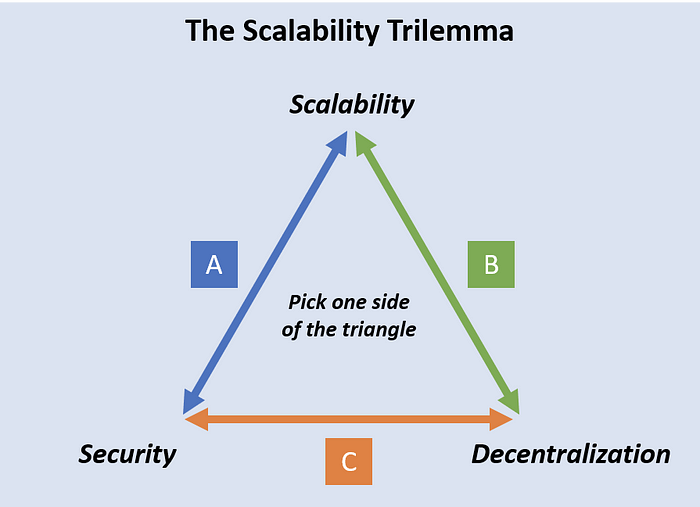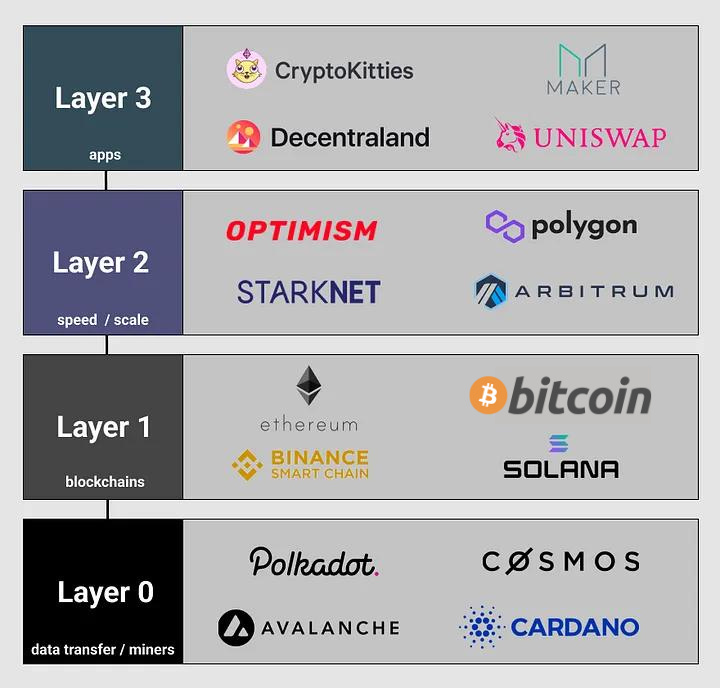Wednesday W.O.W - Role of Blockchain Layers 🔗🥞
[5 min read] Your mid-week bite sized treat on emerging tech on our journey to the Metaverse. Learn about how these layers work together to form real world blockchain architecture that scales.
A nibble of knowledge in your inbox every Wednesday with a simple format:
🇼 What the technology is.
🇴 Objective(s) - what is it trying to achieve, with some examples
🇼 Why it is important.
This is week 45 of the 520 weeks of writing I have committed to, a decade of documenting our physical and digital lives converge.
🇼 What are these "layers" of blockchain?
If you've ventured into the world of crypto and blockchain, you've likely encountered terms like "layer one" and "layer two" protocols. But what do these layers mean, and why are they crucial in the blockchain landscape? In this article, I’ll break down the architecture of blockchain layers and unpack their significance.
At its core, blockchain eliminates the need for intermediaries, enhances transparency, and bolsters security in data exchange. It facilitates trust among parties who may have little reason to trust one another. This trust is the bedrock upon which blockchain networks transact data and value securely. However, for blockchain to thrive, it must be both exceptionally secure and highly scalable to accommodate a growing number of users and transactions. This is where the concept of layers comes into play.
🇴 What the objective of having different layers?
A core objective is to overcome the Scalability Trilemma, which is the primise that there is a trade-off between three important blockchain properties: decentralisation, scalability, and security.
According to the Trilemma, blockchain systems can, at most, possess two out of the following three properties simultaneously:
Decentralisation: This principle underscores the distribution of control across a network, ensuring that no single entity dominates. High decentralisation enhances resilience against censorship and central control. However, it often hampers scalability because achieving consensus among numerous nodes can be time-consuming and resource-intensive.
Scalability: Scalability refers to a blockchain's capacity to handle a growing number of transactions or users without performance degradation. It's crucial for real-world blockchain adoption. Yet, enhancing scalability can come at the cost of decentralisation, as measures like larger block sizes or off-chain solutions can centralise control.
Security: Security is paramount, safeguarding the network against threats and maintaining data integrity. While vital for trust, rigorous security measures can be resource-demanding. Consequently, security can affect both scalability and decentralization, as strong security often requires specialised nodes or validators, potentially reducing network participation.
The “layered approach” is mostly about addressing a blockchains scalability, without compromising the other two. While (centralised) traditional payment networks like Visa's VisaNet can process over 20,000 Transactions Per Second (TPS), Bitcoin's main chain can manage only a fraction of that (7 TPS), but with the Lightning Network this goes up to more than 1 million TPS.
Here's a summary of the roles of layer 0, 1, 2, and 3 blockchains:
Layer 0 (Foundation):
Provides the foundational infrastructure for the entire blockchain ecosystem.
Includes technologies like the internet, mining hardware, and network connections.
Essential for ensuring the reliability, security, and performance of higher layers.
Layer 1 (Base Layer):
The main blockchain layer where core operations occur.
Responsible for consensus, transaction validation, and data storage.
Examples include Bitcoin and Ethereum.
Layer 2 (Scalability Enhancement):
Built on top of Layer 1 to improve scalability and performance.
Implements solutions like state channels, sidechains, and off-chain protocols.
Reduces congestion on Layer 1 and enhances transaction throughput.
Layer 3 (Application Layer):
Focuses on user-facing applications and interfaces.
Includes smart contracts, decentralized apps (DApps), and user interfaces.
Connects end-users to the underlying blockchain infrastructure.
These layers work together to form a comprehensive blockchain architecture, with each layer serving a distinct but interconnected role in the functioning of blockchain networks.
🇼 Why are these layers key in blockchain technology impacting society?
Overcoming the blockchain scalability trilemma, is critical to solving real world problems and achieving mass adoption.
Enhanced User Experience: Scalability directly impacts the user experience. Slow transaction times and high fees on congested networks deter mainstream users. For instance, Ethereum, a popular layer oneblockchain, often grapples with congestion during periods of high demand, resulting in slower processing and elevated transaction costs. This impacts its utility for everyday transactions like micropayments or gaming, unless a layer 2 is used.
Real-World Use Cases: To fulfill blockchain's promise in sectors like finance, supply chain, and healthcare, scalability is essential. Consider international remittances: a scalable blockchain solution can enable faster, cheaper, and more accessible cross-border transactions, empowering millions of unbanked individuals.
Security: Security is paramount for blockchain mass adoption. It fosters trust in the technology by safeguarding transactions and data from threats. Robust security measures are vital for attracting individuals, businesses, and institutions to use blockchain for a wide range of applications, from finance to supply chain management, ultimately driving mass adoption.
🎬 Bonus watch
In a recent discussion between Michael Saylor and Lex Fridman, they discuss the three layers of the Bitcoin ecosystem:
Layer one is the foundational property settlement layer (Bitcoin) with limited bandwidth, ideal for moving substantial sums of money securely over long durations.
Layer two, the Lightning Network, serves as a non-custodial protocol built upon layer one, facilitating quicker and more cost-effective transactions for smaller amounts, enhancing Bitcoin's scalability.
Layer three, on the other hand, represents the custodial layer, where services like exchanges offer rapid and economical Bitcoin transactions but demand trust in the service provider.
Its a good watch, the discussion emphasised the unique advantages of digital property in Bitcoin, allowing for greater custody flexibility and deterring corruption compared to physical assets.
That’s all for this week! If you have any organisations in mind that could benefit from learning about emerging technology, be sure to reach out. Educational workshops are one of many consulting services I offer.




Question - If Layer zero is 'the internet' level I don't understand how Cardano sits as a Layer zero? I can kind of see how Cosmos and Polkadot are - although still they need a layer under them for them to exist too no?? Feels like they are all Layer 1s to me - or at least that is how I think of them.
Or does no settlement happen on Cosmos or Polkadot at all - side question then, how do they make $.